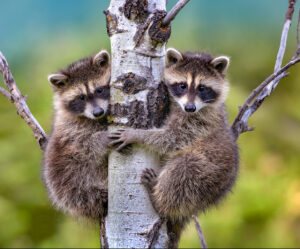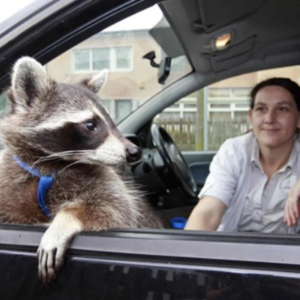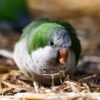- How Long Does A Quaker Parrot Live? - 17 May 2024
- 4 Hacks on Keeping Your Home Clean With Pets - 28 March 2024
- 5 Things to Know Before Bringing Home a New Kitten - 26 March 2024
Raccoons are part of the Procyonidae family and are a cousin to weasels. Their ancestor species evolved in different environments, each occupying its own ecological niche. Many people consider raccoons to be rodents, which is why they’re often confused with mice or rats. Raccoons are opportunistic eaters that feed on fruit, plants, nuts, clams, frogs, fish, birds, and eggs. They’re also adept at sifting through trash and garbage for food.
Table of Contents
Understanding Rodents
Raccoons are medium-sized mammals that have become a symbol of nature in North America, although they can also be seen around the world. They are recognizable by their distinctive facial markings and ringed tail. When people see raccoons in their natural habitat, they are often surprised to learn that they’re not rodents. They are opportunistic feeders and often sift through garbage to find food. They can also be quite sociable, communicating with their peers through scent, sounds, and body language.
One of the most common characteristics that distinguish rodents is their continually growing incisors. Rodents are able to chew through wires, water pipes, wood, and many other things that they shouldn’t. This behavior is what gives them a bad reputation, but it’s actually necessary to keep their incisors from becoming too long for their mouths. Raccoons, on the other hand, are not rodents and they do not have the characteristic incisors
Raccoon Classification
 The raccoon is an intelligent, semi-aquatic mammal. It is a strong swimmer and climber with brilliant night vision and an acute sense of hearing. It is
The raccoon is an intelligent, semi-aquatic mammal. It is a strong swimmer and climber with brilliant night vision and an acute sense of hearing. It is
omnivorous and will eat fish, frogs, bird eggs, garbage, fruit, nuts, and plant
parts. Its nimble fingers are especially useful in exploring stream beds for food and opening containers, including human garbage cans. The animal’s nimble
hands can also grasp branches to scale trees and cling to slippery surfaces. In the wild, raccoons live in woodlands, wetland areas, and farmlands. They are not territorial, and it is common for their dens to be used by more than one raccoon. Raccoons can survive in any habitat as long as water and food are available. Male and female raccoons mate in early spring, with one or more litters being born each year after a gestation period of 60 to 73 days. Each litter has two to five young, called kits, which are raised by their mothers until they are ready to hunt for themselves.
Characteristics of Raccoons
These characteristics provide an overview of the key features and behaviors of raccoons.
| Characteristic | Description |
| Size | Medium-sized mammals, typically 2 to 3 feet long |
| Weight | Usually 10 to 30 pounds, with males larger than females |
| Fur | Grayish-brown fur with a distinctive black mask |
| Tail | Long, bushy tail with alternating light and dark rings |
| Body Shape | Stocky with short legs and sharp claws |
| Nocturnal | Primarily active at night |
| Diet | Omnivorous, eating a wide range of foods including fruits, nuts, insects, and small animals |
| Lifespan | Typically 2 to 3 years in the wild, up to 5-7 years in captivity |
| Dexterity | Very dexterous front paws, often seen manipulating objects |
| Nocturnal | Primarily active at night |
These groups are composed of related females with young and unrelated males. Males protect their territories from other males and may exclude non-relatives. Raccoons in northern areas gorge themselves in spring and summer to store enough body fat for the winter, which they spend asleep in their dens.
Rodents vs. Raccoons
Rodents are a diverse group of mammals that include rats, mice, squirrels, and beavers. They’re characterized by continuously growing front incisors that are used for gnawing. Raccoons, on the other hand, have smaller incisors that don’t grow continuously. Raccoons are also classified as part of the Carnivora order, which means they’re meat-eaters though, like many other members of this family, they’re omnivores who will happily eat whatever is available. They’re not, however, considered part of the Rodentia order or even the suborder Marsupialia. Raccoons are known for their specialty.
- Intelligence
- Dexterity
- Curiosity
- mischievous
- Sharp Brain
They can open doors and containers with their paws and are able to problem-solve in ways that many humans cannot. They have hairless, dexterous front paws that resemble human hands and can be used to explore and manipulate objects such as crayfish, fruit, plants, and garbage. Their ringed tails and masked faces lend them a distinctive look that has given them the reputation of being mischievous. They’re members of the Procyonidae family, which also includes the ringtail cats and coatis of South Africa and the kinkajous of Central America.
Raccoons in Urban Environments
Raccoons’ remarkable hand dexterity and problem-solving skills help them survive in urban environments. They are excellent scavengers and omnivores, eating anything from nuts, fruits, snails, fish, and even pets food left out by humans. They also enjoy resting in ponds and bird feeders. Their nimble fingers enable them to open birdseed containers and bins. They are also adept at opening latches and doors. In the wild, raccoons have been known to live in a variety of habitat types, including forests, wetlands, and prairies.
They may den in hollow trees, ground burrows, brush piles, muskrat houses, barns or abandoned homes, dense clumps of cattails, haystacks, or rock crevices. Scientists believe raccoons prefer to den near natural water sources. At one site, Linthicum, raccoons selected woodland habitat over human-modified landscapes, while at another, Riviera Beach, they avoided urban areas. However, these differences may be a result of age or season, as well as the availability of aquatic habitats nearby.
Human-Raccoon Interactions
 Raccoons live in many different habitats, including urban areas. They are opportunistic and curious animals. They’ve been known to pry open garbage lids, raid campsites and coolers, and even turn on taps for a drink of water. Some people find these nocturnal, intelligent creatures fascinating and delightful, while others consider them pests. One way to minimize conflict with raccoons is to keep pets indoors overnight and pick up any food spilled around outdoor feeding stations. Raccoons also tend to compete with humans for pet food and birdseed, so if you use bird feeders in your yard, it’s best to store the food inside or bring the feeders indoors at night when raccoons are most active. Another way to limit conflicts is to never feed raccoons. This can cause them to lose their fear of humans and become violent or territorial. It can also lead to disease and parasite transmission. Raccoons can carry rabies, a deadly virus that is transmitted through bites. They can also spread canine distemper and feline calicivirus.
Raccoons live in many different habitats, including urban areas. They are opportunistic and curious animals. They’ve been known to pry open garbage lids, raid campsites and coolers, and even turn on taps for a drink of water. Some people find these nocturnal, intelligent creatures fascinating and delightful, while others consider them pests. One way to minimize conflict with raccoons is to keep pets indoors overnight and pick up any food spilled around outdoor feeding stations. Raccoons also tend to compete with humans for pet food and birdseed, so if you use bird feeders in your yard, it’s best to store the food inside or bring the feeders indoors at night when raccoons are most active. Another way to limit conflicts is to never feed raccoons. This can cause them to lose their fear of humans and become violent or territorial. It can also lead to disease and parasite transmission. Raccoons can carry rabies, a deadly virus that is transmitted through bites. They can also spread canine distemper and feline calicivirus.
Nutritional Diet Food Characteristics of Raccoons
Here are the nutritional food characteristics of raccoons Raccoons are opportunistic feeders, adapting their diet in the following points:
Protein Sources: Raccoons consume insects, small mammals, birds, eggs, or fish
Fruits and Vegetables: They forage for fruits, berries, and vegetables, providing vitamins, minerals, and fiber.
Nuts and Seeds: Raccoons eat nuts, acorns, and seeds
Invertebrates: They catch small invertebrates like crayfish, snails, and worms
Human Food: Raccoons raid trash cans and consume leftovers, pet food, and discarded items
Water: Access to clean water is crucial for raccoons, and they drink from various sources like streams, rivers, and puddles
Seasonal Variation: Diets vary with the season and food availability.
Legal Protection and Conservation
In most cases, raccoons present nuisance problems because of unnatural attractants that draw them to gardens, landscaped yards and homes. The first step in dealing with these issues is to identify what lures the raccoon and eliminate it, or seal up potential den sites. In urban areas, a common problem occurs when females seek out attics for nesting sites and rip off shingles or tin roof coverings to gain entry. They may urinate in the attic and create an objectionable odor, or damage insulation on heating and air conditioning ducts.
In agricultural settings, raccoons can cause extensive crop damage by tearing up corn husks and breaking off ears of sweet corn. They will also raid garbage cans and other outdoor waste containers. They are known predators of poultry and other captive wildlife, such as frogs and snails. If nonlethal control methods fail, cage or box traps are practical in most rural and suburban situations. Trapping is not legal in some urban areas and should be done by a professional wildlife control operator who knows the existing laws and restrictions.
Final Thoughts
Raccoons are not rodents. Their classification, behavior, diet, and ecological roles set them apart from the rodent category. While they may pose occasional challenges to humans, raccoons are remarkable creatures that deserve our understanding and respect in the animal kingdom.
















